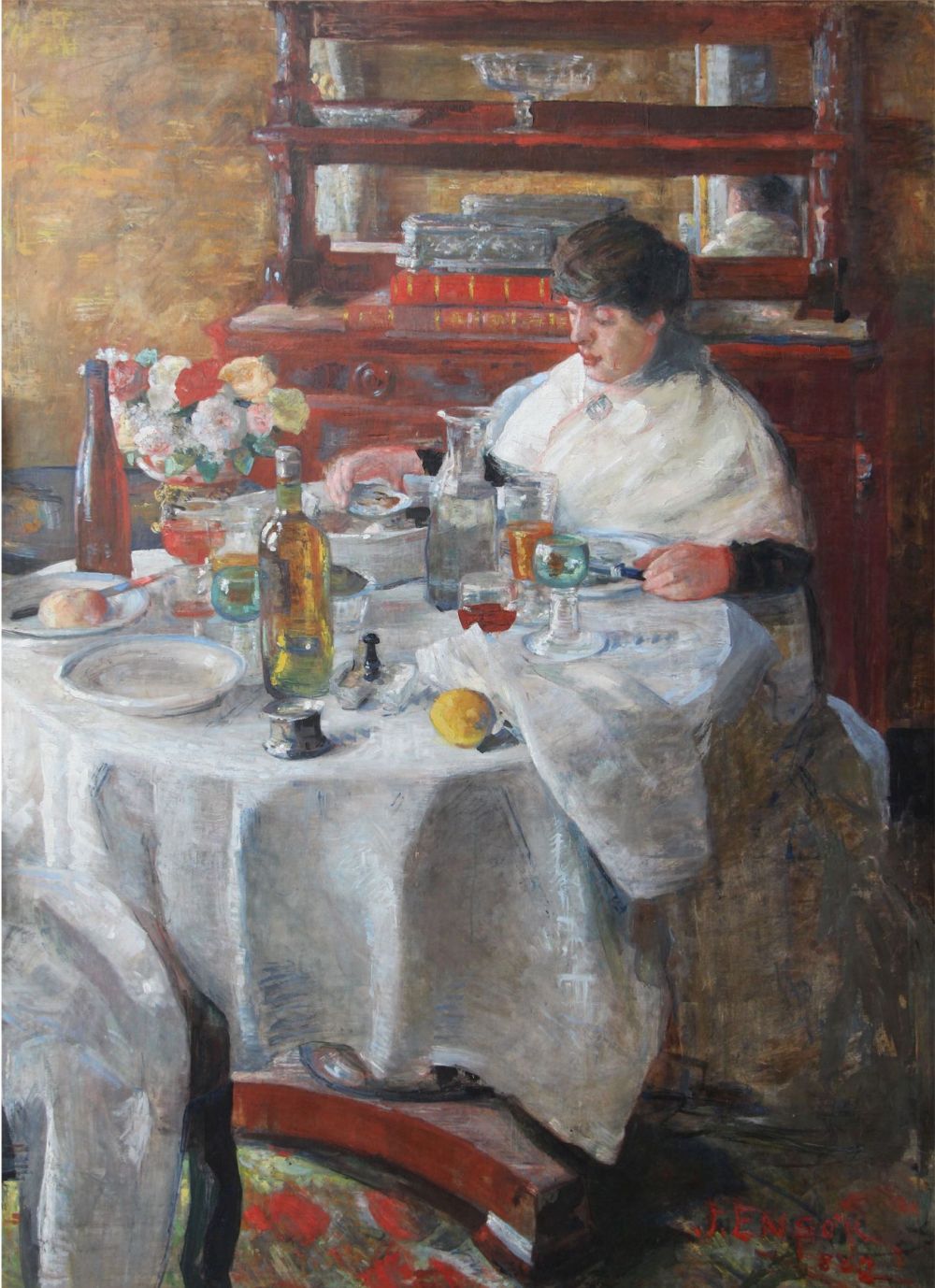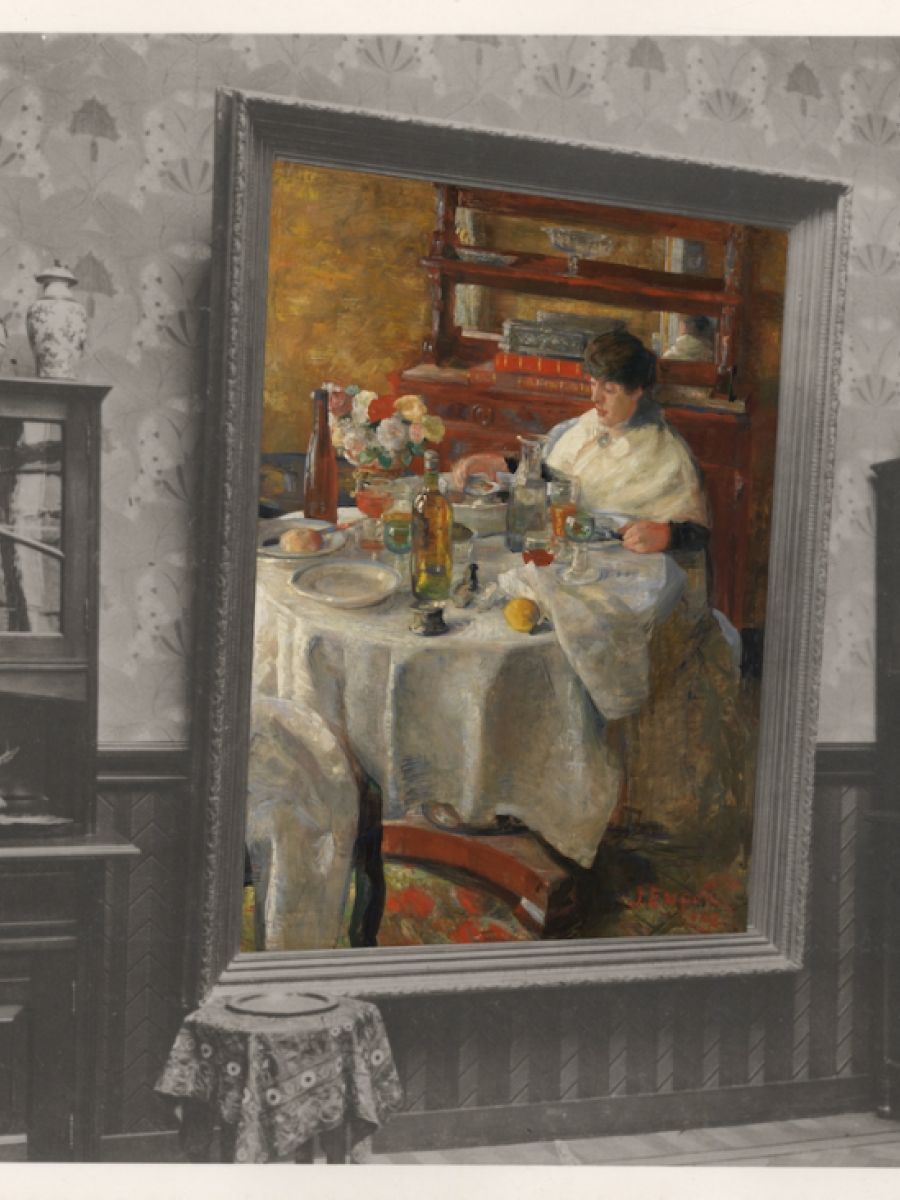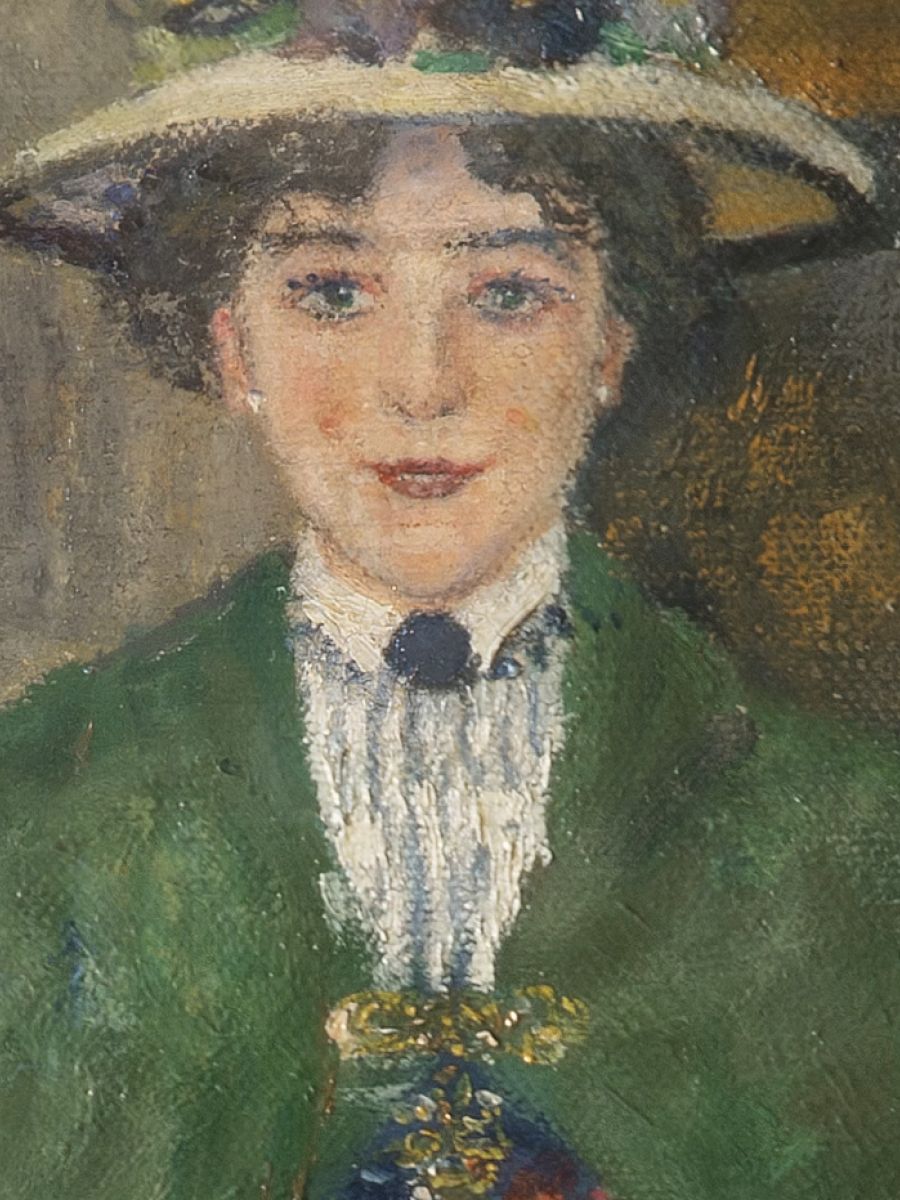Emma Lambotte, Ensor’s soul mate

She published poems, books and art criticism, but it wasn’t enough. When she saw Ensor’s work in a magazine, she immediately recognized a soul mate. A friendship was born, letters exchanged and Emma went on to buy 20 works by Ensor. In doing so, she both supported the artist and raised her own profile. How exactly? We asked Ulrike Müller, who knows all there is to know about the world of art collectors in the 19th and early 20th century.
Who was Emma Lambotte?
Ulrike Müller: ‘Emma was born in Liège in 1876. Her father was the printer and businessman Edouard Protin, so she grew up in a well-to-do bourgeois family. Education was important to the Protins and Emma went to the best private schools, which certainly wasn’t always the case for girls back then. Because of her artistic talents, she was also allowed to take private lessons at the academy in Liège. At the age of 19, Emma married a doctor called Albin Lambotte. The couple moved to Antwerp, where Albin was appointed chief surgeon at the Stuyvenberg Hospital. They lived in a grand house on Louizastraat, near the recently constructed National Bank.’
Did she like Antwerp?
Ulrike Müller: ‘Emma found herself in the conservative medical world in Antwerp. There’s a letter to James Ensor where she describes the guests at a dinner party at her home as “a group of old grey men and their equally grey wives”. She wished Ensor had been there, so she’d have had a like-minded person to talk to. His self-portrait was hung in a prominent place in her dining room, which at least meant she could look at the artist during the dinner and feel connected to him that way. She certainly felt more at home with artists than in high society.’
Ensor made Emma feel less conscious of her lower social status as a woman
How did Emma spend her time?
Ulrike Müller: ‘She wrote. We mainly know her nowadays as a writer of poetry, books and art criticism, albeit under a pseudonym. And she was an art collector too, who identified completely with her collection. The work she chose was often out of step with bourgeois Antwerp taste – a lot of it was contemporary. We haven’t identified an inventory of her collection, so we know all this from photographs and from Emma’s letters.’
True friendship
Wanneer ontmoet ze Ensor?
Ulrike Müller: ‘In 1904. Ensor gave her the true friendship she lacked in her Antwerp circles. She thanks him in one of her letters for treating her more like a pal. Ensor made Emma feel less conscious of her lower social status as a woman.’
What kind of relationship did she have with Ensor?
Ulrike Müller: ‘Emma was bowled over by Ensor’s work. His unconventional style stimulated her taste and her innovative views on art. Supporting Ensor as both a collector and critic also allowed Emma to showcase her own artistic ideals.
‘And Ensor benefited from their friendship too. The fact that Emma bought work from him validated his talent, while the enthusiastic reviews she wrote for the magazines and newspapers helped establish Ensor’s reputation.’
Welke werken koopt Emma bij Ensor?
Ulrike Müller: “Toch vooral de meer omstreden werken, zoals De oestereetster. Voor haar zijn dat de werken die Ensor het meeste typeren, en de beste manier om hem in zijn eigenheid te bevestigen. Bovendien zijn ze een manier om zich te distantiëren van de Antwerpse bourgeoisie."
"Ze zoekt de kantjes wel op. Dat kan ze zich permitteren, want haar familie is in Luik gebleven. Ze kan niemand in verlegenheid brengen met haar eigenaardige smaak. Mogelijk krijgt ze wel steun van haar echtgenoot.”

The Oyster Eater - James Ensor, KMSKA
Overwhelming statement
Where did Emma hang the paintings she bought from Ensor?
Ulrike Müller: ‘Emma hung her Ensors in strategic spots in her home. Like many other women of her class, she held salons, to which she invited writers, musicians and artists. These women paid huge attention to interior design, which was viewed as a typically female occupation at the time. On the other hand, the salons and society dinners that took place in those interiors made them semi-public spaces too. Like many other collectors, Emma used her home to express her individual identity to her peers. The Lambottes had furniture and wallpaper in the latest Art nouveau style, for instance.’

Essential part of the interior - The dining room at Emma and Albin Lambotte’s home in Antwerp, with James Ensor’s’ Oyster Eater at the centre. Photograph c. 1911, Royal Museums of Fine Arts of Belgium, Brussels/AHKB inv. no. 91677/2
De werken van Ensor zijn essentieel in Emma’s interieur. In haar monumentale hal hangt ze Stilleven met chinoiserieën. Een statement, want bezoekers krijgen het meteen te zien als ze het huis betreden. Dichtbij creëert zij haar eigen stillevens met Aziatische prenten, borden, veren, vazen en beeldjes. Maar ze gaat nog een stap verder. In dezelfde hal hangt ze Adam en Eva uit het paradijs verjaagd. Dat is een choquerend werk, dat lang niet iedereen kan appreciëren. Ze schrijft Ensor over het overweldigende effect dat het schilderij heeft op de hele hal.”

Topwerken uit de collectie Lambotte - Adam en Eva uit het paradijs verjaagd

Stilleven met chinoiserieën
Did Emma buy artworks from Ensor herself or did the Lambottes purchase them together?
Ulrike Müller: ‘There are letters showing that Emma picked out the works at Ensor’s place. The artist only wrote to her, but he did describe the couple as friends of his. Albin is known to have been an art lover too, but he was a busy surgeon and so probably had less time to invest in the collection. Ensor showed his gratitude for Emma’s support by giving her his Self-Portrait with Masks.’
Mutual influence
Did Emma have any impact on Ensor’s career?
Ulrike Müller: ‘Emma bought 20 paintings from Ensor all told, which meant she had the largest collection of his work at the time. And as I already mentioned, she wrote about his art as well. Most importantly, it was Emma who introduced Ensor to the Antwerp collector and patron François Franck. He was the driving force behind the progressive art society ‘Kunst van het Heden’ [‘Art of the Present’]. He brought Ensor into the exhibition circuit, which boosted his reputation and prestige. It’s how Ensor came to show his work in Rotterdam in 1910.’
‘A growing number of collectors and museums, including the KMSKA, began to buy his work at that point and Kunst van het Heden even organized an Ensor retrospective in Antwerp in 1921. Emma was the only woman on the exhibition committee and she loaned 14 works from her own collection for the occasion. She made a real mark on the exhibition, precisely because the paintings she owned were less obvious ones.’

Portrait of Emma Lambotte - James Ensor, 1907, private collection (detail)
Did Ensor influence Emma’s own artistic career in any way?
Ulrike Müller:
‘Emma painted when she was young, but that’s not where her ambitions lay. All we know of her work is a painting of an interior with her desk and Ensor’s Self-Portrait with Masks hanging above it. It highlights the inspiration Emma drew from the artist’s work.'
‘She channelled her passion much more into writing. Being an author enabled her to express her opinions. She wanted to be innovative, to emancipate herself, to have a voice as a woman. She could do so more effectively as a patron and writer than as a painter. And she was very effective in her chosen role.'
‘Emma continued to associate herself with Ensor throughout her life. She lectured on his art and also wrote her memoirs through the prism of their friendship. At the age of 85, just before her death, she was still working on a book titled Ensor, que I’ai connu [‘Ensor as I knew him’].’
'In 1927, Emma and Albin sold the KMSKA six works by Ensor, including The Oyster Eater and Adam and Eve Expelled from Paradise. It is not clear why they were willing to part with the paintings – perhaps their new home in Wilrijk was too small or the market was particularly good at that moment.'
Ulrike Müller is a researcher at the Mayer van den Bergh Museum and a post-doctoral researcher at Antwerp University (Centre for Urban History).




